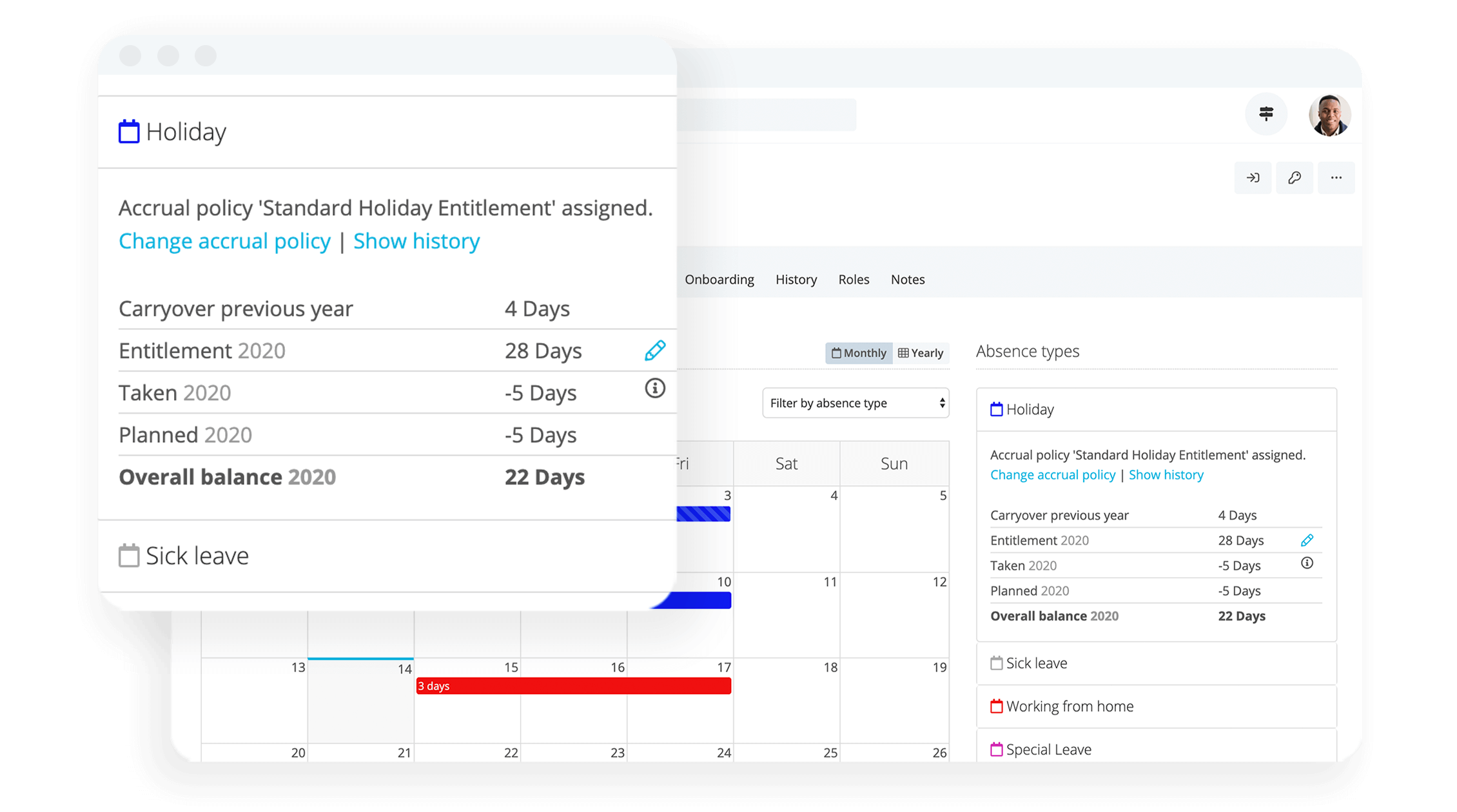When it comes to holiday entitlement for part-time workers, every employee and worker has the right to take time off work. But, the amount they can take comes down to their employment contract. In this article, we’re explaining the basics, and even the tricky details, when it comes to holidays for part-time workers in your organisation.
Track holidays without keeping track of paperwork. Discover Personio today.
Contents
What is Holiday Entitlement for Part-Time Workers?
How Do You Calculate Part-Time Holiday Entitlement?
Holiday Entitlement for Part-Time Workers on Hours
Are Bank Holidays Included in Annual Leave?
In Conclusion: Holiday Entitlement for Part-Time Workers
What is Holiday Entitlement for Part-Time Workers?
In short, all employees are entitled to holiday pay. Employees working five days a week are entitled to 5.6 weeks of annual leave or 28 days (5 working days x 5.6 = 28 days). But, there’s a difference if you’re a full-time employee or a part-time worker.
Even though the terms “worker” and “employee” can be used synonymously, legally, they’re pretty different. An employee is usually under a contract of employment and they enjoy the highest level of employment protection rights.
On the other hand, workers are usually under a much broader legal term and have limited employment rights, as defined by their employment contract.
Even though these terms differ, part-time workers are still entitled to holiday pay; it’s just a different calculation rate for them. So, if you’re an:
- Agency worker employed by Uber or Lyft
- Someone doing irregular hours like a truck driver or customer support agent
- Or a worker with zero-hours contracts like a receptionist or healthcare assistant
In each of these cases, you are still entitled to holiday pay. That said, it’s less favourable when compared to full-time employees.
How Do You Calculate Part-Time Holiday Entitlement?
The holiday entitlement for part-time workers needs to be calculated using a pro-rata — which is proportionate to the amount of time a part-time employee worked when compared to a full-time employee.
A full-time employee has 28 days (5 working days x 5.6) of annual leave. As an example, let’s take a part-time worker who works three days a week. Their holiday leave would be three working days x 5.6 = 16.8 days of total annual leave.
Let’s take a look at this handy chart to figure out holiday entitlement for part-time workers at a glance:
| Work Days (Per Week) | Calculation | Entitlement (Per Year) |
|---|---|---|
| 4.5 | 4.5 days x 5.6 = 25.2 | 25.2 working days |
| 4 | 4 days x 5.6 = 22.4 | 22.4 working days |
| 3.5 | 3.5 days x 5.6 = 19.6 | 19.6 working days |
| 3 | 3 days x 5.6 = 16.8 | 16.8 working days |
| 2.5 | 2.5 days x 5.6 = 14 | 14 working days |
| 2 | 2 days x 5.6 = 11.2 | 11.2 working days |
| 1.5 | 1.5 days x 5.6 = 8.4 | 8.4 working days |
| 1 | 1 day x 5.6 = 5.6 | 5.6 working days |
| 0.5 | 0.5 days x 5.6 = 2.8 | 2.8 working days |
Holiday Entitlement for Part-Time Workers on Hours
There are two ways how to calculate holiday entitlement for staff working on hours:
- Shift calculation
- Hourly calculation
With a shift calculation, you see how many shifts are worked per week. If it’s five shifts a week, then you multiply the shift by 5.6 to get the appropriate holiday entitlement.
For example, a retail worker has a 6-hour shift and is working for 4 days a week. 4 days x 5.6 = 22.4. In this case, the worker has the right to take 22.4, 6-hour shifts off work as a part of her holiday entitlement.
For an hourly calculation, you take the number of hours the person worked during the week and multiply it by 5.6 to get the number of hours the person is entitled to take as their annual leave.
For example, a driver working 29 hours a week (29 hours x 5.6 = 162.4 hours) gets 162.4 hours of holiday entitlement per year.
At a Glance: Easily Manage Absences Across Your Org

Bank Holiday Entitlement for Part-Time Workers
Part-time workers should be treated the same as your full-time employees when it comes to bank holidays.
There are eight bank holidays a year, and most of them fall on Mondays. If a part-time worker isn’t working on that day, they might get fewer days in their holiday entitlement.
There are some organisations that offer pro-rata bank holiday entitlement. With this, the part-time workers will get the right number of holidays in return.
Do You Have to Give Employees Time Off for Bank Holidays?
You should give your full-time employees time off for bank holidays. But when it comes to your part-time workers, you’re not legally obligated to do so.
In fact, many companies require their part-time workforce to work during bank holidays, especially in the retail industry and hospitality services.
Are Bank Holidays Included in Annual Leave?
The annual leave for a full-time employee is a minimum of 28 days. The employer can decide whether to include the bank holidays (8 days) into that annual leave. So employees will have a minimum of 20 days plus 8 days (for bank holidays) of annual leave.
Some companies decide not to include bank holidays in their holiday entitlement policy so full-time employees might get more days off.
For example, a company might say in their employment contracts that they offer 24 days of holiday entitlement in addition to public and bank holidays. With that, the employee might receive 32 (24 days + 8 bank holiday days) days as their holiday entitlement.
Employers usually have a policy that rewards employees with more holiday entitlement the more years they spend with the company.
In Conclusion: Holiday Entitlement for Part-Time Workers
We’ve covered everything you need to know when it comes to holiday entitlement for part-time workers. From calculating the number of holiday days to the questions regarding bank holidays.
In case you need more information regarding holiday pay, you should check out The Employer’s Complete Guide To Calculating Holiday Pay on our blog.
Manage Absences,
Not Paperwork





